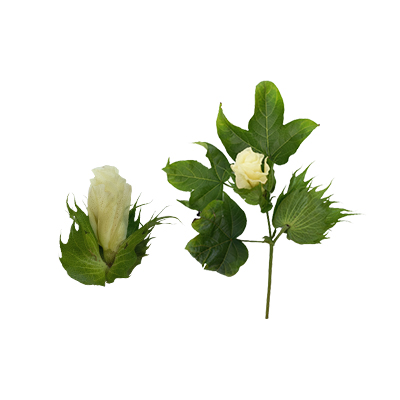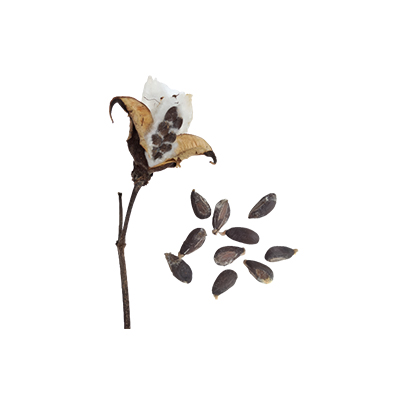Gallini Cotton
Gossypium barbadense L.
Malvaceae
Location in our garden
Principal
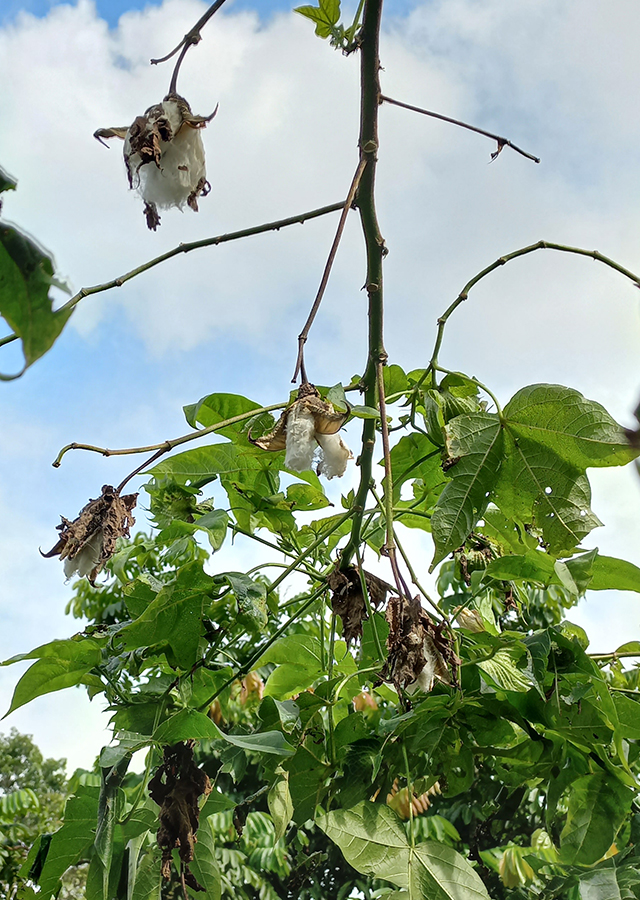
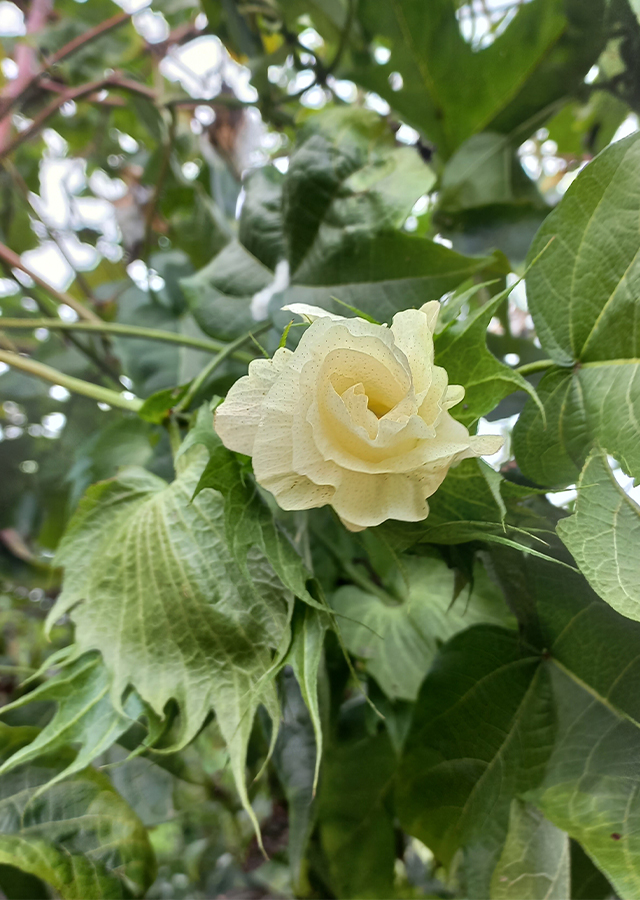
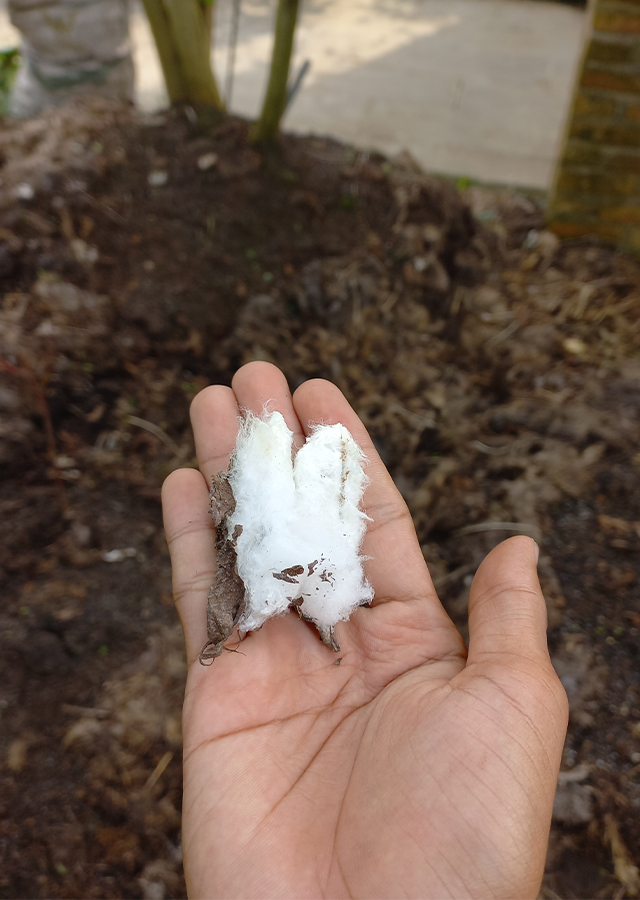
Synonym
Gossypium acuminatum Roxb. ex G.Don
Gossypium auritum O.F.Cook & J.W.Hubb.
Gossypium barbadense var. apospermum (Sprague) Roberty
Habitus
Shrubs. An evergreen perennial plant that grows about 3 metres tall
Part Used
Leaves
Seeds
Bark
Flowers
Roots
Growing Requirements
Full Sunshine
Habitat
Riverbanks
Shrublands
Terrestrial
Overview
Gossypium barbadense is native to Peru and Ecuador that has been widely introduced in cultivation. It has become naturalized in Africa, Australia, Oceania, and parts of the Caribbean and is categorized as invasive on a number of Pacific Islands. A tropical species, but is also successfully cultivated in warm temperate climates. It is the main cotton grown in Egypt and the Caribbean, with other major producers including Sudan, Peru and the USA. The plant is widely grown in many tropical to warm temperate regions for the seed floss which is used to make cloth. An oil obtained from the seed is used in salads, canned goods and manufactured into margarine.
Vernacular Names
Coton a longue soie (French), Algodón (Spanish), Westindische Baumwolle (German), Algodón criollo (Cuban), Algodón Americano (Mexican), Vavae (Tonga), Hai dao mian (Chinese).
Agroecology
Gallini cotton can be grown in the dry to moist tropics and subtropics, where it is found at elevations up to 1,500 m. For commercial production it requires a climate that has a long, hot growing season with abundant moisture, followed by a drier period for harvesting the seed floss. It grows best in areas where annual daytime temperatures are within the range 22-32 °C, but can tolerate 15-38 °C. It prefers a mean annual rainfall in the range 750-1,250 mm, but tolerates 500-1,500 mm. Prefers a very sunny position in a light, fertile soil. Plants can tolerate a range of well-drained soils, including moderate levels of salt. Prefers a pH in the range 5.2-7.2, tolerating 5-8.5. Requires a position sheltered from strong winds.
Morphology
- Roots - tap root robust, often with four rows of lateral roots.
- Stem - strong and ascending stem, main stem monopodial with internodes decreasing in length from the base to the top, nodes bearing leaves with axillary branches.
- Leaves - spirally arranged, long-petiolate; lamina usually 3-5-lobed, 7.5-15 x 7.5-15 cm, cordate at base and with triangular and acuminate lobes, usually with stellate hairs and glands on undersurface of main veins, stipules present but caducous, falcate, 10 x 4 mm.
- Flowers - solitary on axillary, sympodial branches, seemingly opposite the leaves, stalked with three glands near the top of the pedicel; epicalyx consisting of 3 (-4) large toothed segments; calyx small, cup-shaped, obscurely lobed, petals 5, obovate, 5 cm long, initially creamy-white and turning pink or red; stamens numerous, filaments united in a staminal column; ovary superior, style inside staminal tube, stigma lobed.
- Fruit - a leathery, spherical or ovoid capsule, 2-6 cm long, (3-) 4-5-locular with numerous seeds.
- Seeds - pear-shaped, 3.5-5 mm long; testa with short and very long, convoluted hairs.
Cultivation
- Generative propagation is by seed. The sowing date is chosen in such a way that the harvest will coincide with the beginning of the dry season. The planting density varies widely with cultivar, climate and soil characteristics, and cultivation as well as harvest methods. Spacings are 50–120 cm between rows and 15–60 cm within the row. It is advised not to sow less than 5 seeds per hill. About 20–25 kg/ha delinted seed is necessary for sowing, for instance at 80 cm × 30 cm spacing.
- Propagated vegetatively by cuttings, budding or grafting.
Chemical Constituents
Triterpenoids, sesquiterpenoid aldehydes, gossypol, hemigossypol, 6-methoxyhemigossypol, 6-deoxyhemigossypol, 6-methoxyhemigossypol, 6, 6'-dimethoxy hemigossypol, heliocides H1 and H2, gossyrubilone, 3, 4-dihydroxy-5-isopropyl -2H – naphtho [1, 8-bc] furan, 3-hydroxy-5-isopropyl-4 -methoxy-7-methyl-2H – naphtho [1, 8-bc] furan, desoxy-6-methoxyhemigossypol, flavonols, tannins, cytotoxic sulfate, sesquiterpene glycosides, sesterpenoids, essential oils (monoterpenes consist of tricyclene, bornyl acetate, pinene, terpinene, isoleden).
Traditional Medicinal Uses
- The root is abortifacient, emetic and emmenagogue. An infusion of the root bark is used to treat difficult or irregular menstruation.
- The stem bark is used in a preparation to strengthen the womb.
- The leaves are antipruritic, diuretic and hypotensive. Leaves of the red variety of cotton are used for treating high blood pressure; abdominal cramps and pain; menstrual problems; painful ovaries; and difficult expulsion of afterbirth. Applied externally, the leaves are macerated in oil to make a poultice that is used to soothe an overheated person. An infusion of the leaf juice is used to treat skin rash and children's cramps. The juice from macerated leaves is used as wash to treat itchy skin.
- The flower buds are used as an auricular analgesic.
- The seeds are crushed, and the juice given to babies as a treatment for thrush. The seed fibres are laxative and pectoral, used to treat diarrhoea and thrush.
Part Used
Reference Sources
- Royal Botanic Gardens. 2021. Gossypium barbadense L.. https://powo.science.kew.org/taxon/urn:lsid:ipni.org:names:559677-1. 20-12-2021.
- PROTA. Gossypium barbadense L.. https://www.prota4u.org/database/protav8.asp?g=pe&p=Gossypium+barbadense+L. 20-12-2021.
- Useful Tropical Plants Database. 2021. Gossypium barbadense. http://tropical.theferns.info/viewtropical.php?id=Gossypium+barbadense. 20-12-2021.
- CAB International. 2021. Gossypium barbadense (Gallini cotton). https://www.cabi.org/isc/datasheet/25794. 20-12-2021.
- Essien Emmanuel E. , Sherifat O. Aboaba, Isiaka A. Ogunwande. 2011. Constituents and antimicrobial properties of the leaf essential oil of Gossypium barbadense (Linn.). Journal of Medicinal Plants Research Vol. 5(5), pp. 702-705, 4 March, 2011. https://www.researchgate.net/publication/287417485_Constituents_and_antimicrobial_properties_of_the_leaf_essential_oil_of_Gossypium_barbadense_Linn. 20-12-2021.



